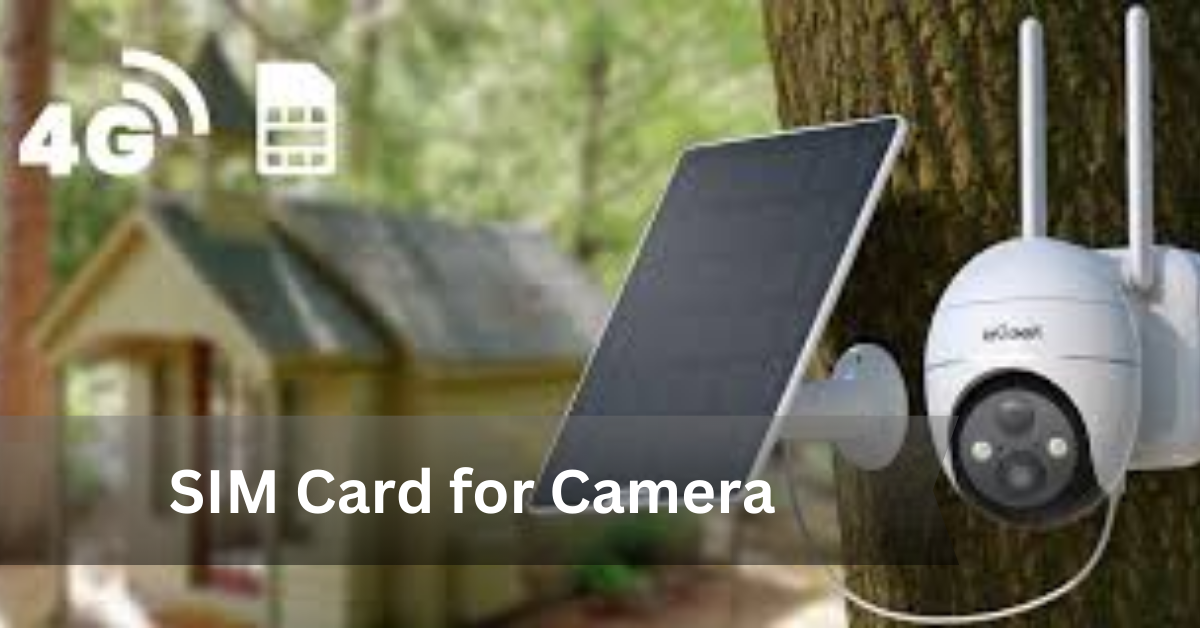Ever wondered how your trail or security camera sends footage without Wi-Fi? The secret lies in a SIM card.
Many modern cameras now include cellular capabilities, allowing them to transmit images and videos over mobile networks using SIM cards.
SIM card for camera technology enables users to monitor remote areas, receive real-time alerts, and manage surveillance without relying on wired connections or Wi-Fi.
In this guide, you’ll learn what a camera SIM card is, how it works, which types of cameras support it, the best data plans, and answers to common questions.
What Is a SIM Card for Camera?
A SIM card for a camera is a small chip used in cellular-enabled cameras to allow them to send images or videos over mobile networks (3G, 4G, or LTE). Unlike Wi-Fi-dependent cameras, these devices can operate in remote or rural areas, making them ideal for security surveillance, wildlife observation, and trail monitoring.
How It Works
A SIM card in a camera enables:
- Cellular Data Transmission
The camera connects to a mobile network to transmit photos, videos, or alerts directly to a user’s phone, email, or app — no Wi-Fi required. - Remote Monitoring & Control
Users can access footage or adjust camera settings remotely, making it ideal for off-grid setups like hunting lands, farms, or construction sites.
Types of Cameras That Use SIM Cards
Different use cases call for different SIM-enabled camera types. Here’s a breakdown of the most common:
1. Trail Cameras (Cellular Trail Cams)
- Purpose: Wildlife monitoring, hunting, and outdoor research.
- How They Work: Capture motion-triggered photos and send them to your phone or cloud storage using a cellular signal.
- Special Features: IR night vision, motion sensors, long battery life.
- Top Brands: Spypoint, Moultrie Mobile, Stealth Cam, Bushnell.
2. Security Cameras (4G LTE Security Cams)
- Purpose: Home and property security in areas with no Wi-Fi.
- How They Work: Stream live video and send motion alerts via mobile network.
- Special Features: Two-way audio, remote access, SD/cloud storage.
- Top Brands: Reolink Go Plus, Arlo Go 2, Eufy Security 4G.
3. Wildlife Cameras
- Purpose: Scientific research, animal observation, environmental monitoring.
- How They Work: Automatically capture animal activity and transmit the data to researchers or remote users.
- Special Features: High resolution, weatherproof housing, time-lapse.
- Top Brands: Cuddeback, Reconyx, Browning.
4. Construction Site Cameras
- Purpose: Job site surveillance, progress documentation, and theft prevention.
- How They Work: Capture periodic or live footage and upload it to secure platforms via SIM-based LTE.
- Special Features: Solar-powered, rugged build, wide-angle coverage.
- Top Brands: Sensera Systems, Reolink Duo 4G LTE, CamDo.
5. Dash Cams with SIM Support
- Purpose: Fleet tracking, road safety, and accident evidence.
- How They Work: Transmit real-time driving footage and GPS data.
- Special Features: Real-time tracking, emergency alerts, cloud backup.
- Top Brands: BlackVue, Viofo, Thinkware.
Best SIM Cards for Different Camera Types
Choosing the right SIM card for your camera is essential to ensure consistent connectivity, fast data transfer, and affordable service. Different camera types have different data needs — from occasional photo bursts in trail cams to continuous video streams in security cams.
Best SIM Cards for Trail Cameras
Trail cameras require moderate data for sending motion-triggered images or short video clips. Most work well with prepaid or flexible data plans.

Eiotclub.com
- Top Picks:
- T-Mobile Prepaid – Flexible plans, good rural coverage.
- Spartan Camera SIM – Designed specifically for trail cams.
- AT&T Prepaid – Solid nationwide coverage, good for hunting areas.
- Features to Look For:
- Strong rural signal coverage
- Pay-as-you-go or seasonal data options
- Compatibility with popular trail cam brands
Best SIM Cards for Security Cameras
Security cameras, especially LTE-enabled models, require high data capacity for live streaming, HD recording, and mobile notifications.

- Top Picks:
- Verizon LTE SIM – Excellent nationwide LTE for 24/7 monitoring.
- Reolink 4G LTE Plan (via T-Mobile or AT&T) – Optimized for Reolink Go cams.
- Arlo Mobile SIM (through Verizon) – Tailored for Arlo Go users.
- Features to Look For:
- Unlimited or high-data plans
- Fast upload speeds
- 4G LTE or 5G compatibility
Best SIM Cards for Wildlife & Outdoor Cams
Wildlife and research cameras often operate in extreme or remote conditions, where connectivity and battery life are crucial.
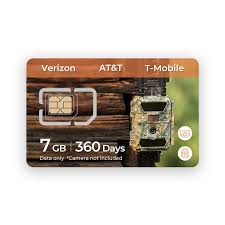
- Top Picks:
- Hologram Global IoT SIM – Great for researchers and international use.
- Global M2M One SIM (IoT use) – Designed for low-power field operations.
- AT&T IoT Plan – Reliable U.S. coverage with flexible usage rates.
- Features to Look For:
- Global roaming capabilities
- Weather-resistant SIM (ruggedized)
- Remote activation and usage tracking
Best SIM for International Use & Travelers
If you’re using your camera while traveling or across borders, you’ll need a roaming-capable SIM with international data access.
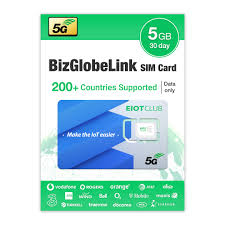
- Top Picks:
- Airalo – eSIMs for 200+ countries, easy online setup.
- GigSky – Global data plans, compatible with LTE cameras.
- Keepgo – Lifetime data SIM, works worldwide.
Comparison Table: Top SIM Card Plans for Camera Use
| Provider | Plan Type | Best For | Coverage | Starting Price | Notable Features |
| T-Mobile Prepaid | Flexible/Monthly | Trail Cameras | Nationwide | $10/mo | No contract, good for casual users |
| Verizon LTE | Monthly/Unlimited | Security Cameras | Excellent LTE | $30+/mo | High-speed uploads, strong support |
| Spartan Camera | Custom Trail Plan | Trail Cameras | Regional | $15/mo | Made for hunting/wildlife cams |
| AT&T Prepaid | Monthly/IoT | Mixed Use | Wide U.S. | $25/mo | LTE + 5G support |
| Airalo (eSIM) | International | Global Travelers | 200+ Countries | $5+ | eSIM, instant setup, travel-friendly |
| Hologram IoT | Global IoT SIM | Wildlife & Remote | Global | Pay-as-you-go | Perfect for scientific or remote field use |
| Keepgo | Lifetime SIM | Outdoor/Travel | Global | $49 | One-time buy, refill anytime |
How to Choose the Right SIM for Your Camera
Selecting the best SIM card depends on the type of camera, usage location, and data needs. Here’s a guide to help you make an informed decision:
Determine Your Camera Type
Each camera has unique data and connectivity needs:
- Trail Cameras: Low to moderate data for image bursts or short clips.
- Security Cameras: High data usage for HD video streaming and alerts.
- Wildlife Cams: Often used in remote areas with low power consumption.
- Travel/Portable Cameras: Require flexible international plans or eSIMs.
Consider Data Usage
Estimate how much data your camera will use monthly:
| Use Case | Estimated Data Per Month |
| Basic Image Uploads | 100MB – 500MB |
| Short Video Clips (720p) | 500MB – 1GB |
| Live Streaming (1080p) | 2GB – 10GB+ |
| Motion Detection Alerts | Minimal (~50MB) |
Check Network Compatibility
Make sure your camera supports the carrier’s band/frequency:
- In the U.S.: AT&T, Verizon, and T-Mobile dominate LTE coverage.
- Globally: Look for multi-network SIMs or IoT SIMs like Hologram or Airalo.
- eSIM Support: Ensure your camera supports eSIMs if you plan to go contract-free or travel globally.
Look for Key Features
Choose a SIM plan with features that match your goals:
- No contracts for flexibility
- Data rollover or pay-as-you-go
- Good coverage in remote areas
- Easy online activation & monitoring
SIM Card Size & Format
Most cameras use nano SIMs, but always check your device manual for:
- SIM Type: Nano / Micro / Standard
- Hot-swappable? Some models let you change SIMs without rebooting.
Power Source
- Battery-powered (rechargeable or AA) for flexibility.
- Solar-powered for long-term, off-grid use.
- AC-powered for home/business installations.
Cloud & Local Storage
- Cloud storage with cellular upload = remote access to footage.
- Local SD card backup ensures recording even if signal drops.
Video Quality
- 1080p is standard. Choose 4K only if the network supports high-speed data.
- Look for night vision and motion detection if using for surveillance.
Mobile App & Remote Access
- Check app ratings and reviews for real-time alerts, streaming, and control.
- Must support iOS and Android.
Top SIM-Compatible Camera Picks by Category
| Use Case | Camera Model | Key Features | Est. Price |
| Home Security | Reolink Go Plus | 4G LTE, 2K video, solar support, motion alerts | $180–$230 |
| Outdoor Wildlife | Spypoint Link-Micro-S LTE | Trail cam, solar panel, LTE, app included | $150–$200 |
| Remote Property | Arlo Go 2 LTE | Dual SIM + Wi-Fi, GPS, 1080p, weatherproof | $250–$300 |
| Budget Pick | CREATIVE XP 4G Trail Cam | Infrared, SIM+SD, weatherproof | $100–$150 |
| International Travel | Eufy 4G LTE Cam S330 | Dual connectivity, AI detection, 2K video | $200–$250 |
Pro Tips Before You Buy
- ✅ Check carrier support in your region before activating.
- ✅ Test SIM signal strength at your install location with a phone first.
- ✅ Choose a camera with remote firmware updates for long-term support.
Pro Tip
Always register your SIM card and check for any carrier activation requirements. Some IoT-focused SIM providers even offer custom portals for device management, perfect for long-term or multi-camera deployments.
Setup Guide: Inserting and Activating SIM Cards in Cameras
Setting up your SIM-compatible camera is straightforward if you follow these steps carefully.
Step 1: Choose the Right SIM Card
Before you begin:
- Confirm the camera’s required SIM size: standard, micro, or nano.
- Ensure the SIM supports data-only plans (voice and text are not needed).
- Make sure the SIM is compatible with the cellular bands your camera supports (typically 4G LTE).
Tip: Check the manufacturer’s specifications or manual for SIM compatibility.
Step 2: Insert the SIM Card
- Power off the camera before inserting the SIM card.
- Locate the SIM card slot. It may be behind a battery door, beside the SD card slot, or under a weatherproof cover.
- Insert the SIM card in the correct orientation (usually with the gold contacts facing down).
- Insert the SD card if your camera requires one.
Note: The SIM card should fit smoothly—do not force it.
Step 3: Power On and Connect
- Turn the camera on.
- Wait a few seconds to a minute for the camera to detect the network.
- Check for a network signal indicator—this could be an LED light or a screen message.
What to expect:
- A green or blue LED or signal icon indicates a successful connection.
- A red light or no signal may mean the camera is out of range or the SIM is not recognized.
Step 4: Configure in the Mobile App
- Download the manufacturer’s official app (e.g., Reolink, Spypoint, Arlo).
- Open the app and log in or create a new account.
- Use the “Add Device” option to pair the camera with your account.
- Follow the app instructions to set up Wi-Fi fallback (if available), camera name, and motion alerts.
Tip: Set a strong password and enable app permissions for alerts and location access if required.
Step 5: Activate Your Data Plan
Depending on your SIM provider:
- Prepaid SIMs often activate automatically when inserted.
- Postpaid SIMs may require login to the carrier’s website or a phone call.
- Some cameras support eSIMs, which are activated through a QR code scanned via the app.
Important: Ensure that your SIM has an active data plan with sufficient monthly bandwidth.
Step 6: Test Your Camera
After setup:
- Stream a live feed from the mobile app.
- Trigger motion detection alerts to ensure connectivity.
- Check the signal strength in the app or on the device.
Troubleshooting Tips
| Issue | Solution |
| No signal | Reseat the SIM, test it in a mobile phone, or try another location |
| SIM not recognized | Reboot the camera, check for SIM lock or incorrect size |
| Unable to connect to the app | Confirm mobile data is enabled and app permissions are granted |
| Video not uploading | Check your data plan for speed and upload limits |
Top SIM-Compatible Cameras in 2025
Looking for a reliable camera that works with a SIM card for remote monitoring without Wi-Fi? Below are some of the best SIM-compatible cameras in 2025, ideal for trail surveillance, home security, and outdoor observation.
1. Spypoint Link Micro LTE
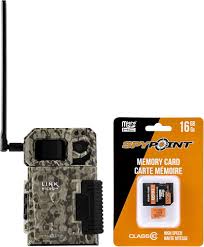
- Type: Cellular trail camera
- Key Features: 10MP photos, LTE connectivity, compact size, motion-triggered capture
- Best For: Hunters and wildlife observers who need remote image delivery
- Why It Stands Out: Affordable with free basic photo transmission plan
2. Reolink Go Plus
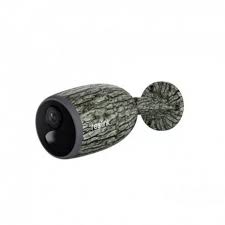
- Type: 4G LTE security camera
- Key Features: 2K QHD resolution, solar panel compatibility, night vision, smart alerts
- Best For: Remote property monitoring, farms, construction sites
- Why It Stands Out: Reolink app support and solid image quality for the price
3. Vosker V200
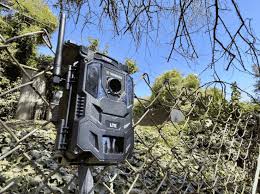
- Type: LTE security and trail camera
- Key Features: Weatherproof, built-in solar panel, motion detection, photo and video support
- Best For: Security in remote areas without power or internet
- Why It Stands Out: AI-powered image recognition and rugged design
4. CreativeXP 4G LTE Cellular Trail Camera

- Type: Cellular trail/security camera
- Key Features: Infrared night vision, HD video, weatherproof build, real-time alerts
- Best For: Rural surveillance and outdoor wildlife monitoring
- Why It Stands Out: U.S.-based customer support and pre-configured SIM for quick setup
5. Arlo Go 2
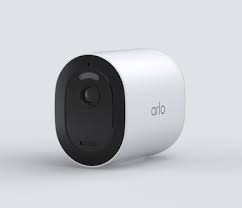
- Type: 4G LTE + Wi-Fi smart security camera
- Key Features: 1080p video, two-way audio, built-in GPS, cloud and local storage options
- Best For: Professionals who need flexible monitoring on the move
- Why It Stands Out: Dual connectivity and integration with smart home platforms
FAQs: SIM Cards for Cameras
What SIM card is compatible with Canon cameras?
Canon cameras do not natively support SIM cards unless you’re using a model with built-in cellular capabilities (rare). For wireless photo transfer, Canon typically uses Wi-Fi or Bluetooth. To connect a Canon camera to a network via SIM, you’d need an external cellular hotspot or a camera-specific cellular adapter.
Can I use a SIM card for a wireless camera?
Yes, many wireless security and trail cameras use SIM cards to transmit data over 4G LTE networks. These are often used in remote areas where Wi-Fi is unavailable. Look for cameras that specifically list “cellular” or “SIM-compatible” in their features.
What is the best 4G SIM card for a security camera?
The best 4G SIM cards for security cameras in the U.S. include:
- AT&T Prepaid Data-Only SIM
- T-Mobile Connect (prepaid)
- Verizon M2M (Machine-to-Machine) SIM
- SpeedTalk Mobile (affordable prepaid plans)
Choose based on your location’s coverage and data needs.
Where can I buy a SIM card for a camera near me?
You can find SIM cards for cameras at:
- Best Buy
- Walmart
- Target
- Carrier stores (AT&T, T-Mobile, Verizon)
- Online options like Amazon or B&H Photo if you prefer delivery.
Can I find a SIM card for a camera nearby?
Yes. Search for “SIM card for camera near me” using Google Maps or visit local electronics or mobile carrier stores. Most retailers carry data-only SIMs compatible with cellular cameras.
Do Samsung cameras use SIM cards?
Samsung digital cameras do not generally use SIM cards. However, Samsung security cameras that are part of smart home systems may be Wi-Fi or LTE-enabled. For LTE-enabled models, use a data SIM from a compatible carrier.
What is the best SIM card for a camera overall?
The best SIM card depends on your region and data needs. In general:
- T-Mobile & AT&T are known for broad compatibility.
- SpeedTalk Mobile is ideal for budget users.
- International travelers may prefer Truphone or Keepgo SIMs with global coverage.
Can I get a SIM card for my camera at Best Buy?
Yes. Best Buy offers data-only SIM cards, especially from AT&T, T-Mobile, and prepaid services like SpeedTalk. Make sure the SIM card supports the LTE bands your camera uses.
What SIM card should I use for my camera?
To choose the right SIM card for your camera, you’ll need to:
- Check if your camera supports cellular data (usually labeled as “4G LTE” or “cellular”).
- Opt for a data-only SIM plan that works with your camera model (e.g., AT&T, Verizon, or T-Mobile).
- Ensure the plan offers sufficient data allowance for regular uploads or live-streaming.
My camera says my SIM card is expired. What should I do?
If your SIM card is expired, you will need to:
- Contact your carrier to renew or replace the SIM card.
- Activate a new plan if the card has expired due to inactivity.
- Ensure the SIM is compatible with your camera model’s specifications (e.g., LTE support).
How do I choose a SIM card for a camera?
To choose the right SIM card:
- Compatibility: Check the camera’s specifications to determine if it supports LTE, 3G, or 4G.
- Carrier Coverage: Choose a carrier with strong coverage in your camera’s location.
- Data Plans: Select a data plan that aligns with your usage (e.g., high data for constant footage upload or a small plan for occasional image uploads).
What kind of SIM card does my camera need?
Most cameras that support cellular data use a micro-SIM or nano-SIM (depends on the model). Ensure you choose a data-only SIM that is compatible with the camera’s network requirements (e.g., 3G, 4G LTE, or 5G).
Do all cameras support SIM cards?
No, not all cameras support SIM cards. Only cellular cameras (such as trail cameras, wildlife cameras, and certain security cameras) typically use SIM cards. Standard digital cameras and most security cameras rely on Wi-Fi or local storage.
What’s the best data plan for trail cameras?
For trail cameras, choose a pay-as-you-go data plan or prepaid SIM with a low-data package:
- AT&T Prepaid Data Plans (Ideal for occasional uploads)
- T-Mobile Data-Only Plan (Great for high-speed data transfer)
- SpeedTalk Mobile (Affordable options for minimal data use)
Make sure your plan offers low-cost, flexible billing for occasional uploads.
Can I use my phone SIM in a camera?
You can technically use your phone SIM in a camera if it’s compatible with the SIM size (nano, micro, etc.) and supports the right network bands. However, using a dedicated data-only SIM is typically more cost-effective and ensures that you don’t deplete your mobile plan’s data allowance.
Do SIM cameras work without Wi-Fi?
Yes, SIM-enabled cameras do not require Wi-Fi. They use cellular networks (4G LTE, 3G, etc.) to transmit images or videos, making them ideal for remote locations or areas where Wi-Fi is unavailable.
Is 4G better than 3G for camera SIM cards?
Yes, 4G is better than 3G for camera SIM cards. Here’s why:
- Speed: 4G offers faster data transfer speeds, meaning quicker uploads and streaming of footage.
- Coverage: 4G networks are more widely available and reliable compared to 3G.
- Future-Proofing: As 3G networks are being phased out, 4G ensures long-term functionality.
Conclusion
SIM-enabled cameras offer flexibility for remote monitoring without Wi-Fi. Choosing the right SIM plan ensures consistent performance and savings.
Ready to power up your camera with the right SIM? Explore our top picks and start recording anywhere today!

